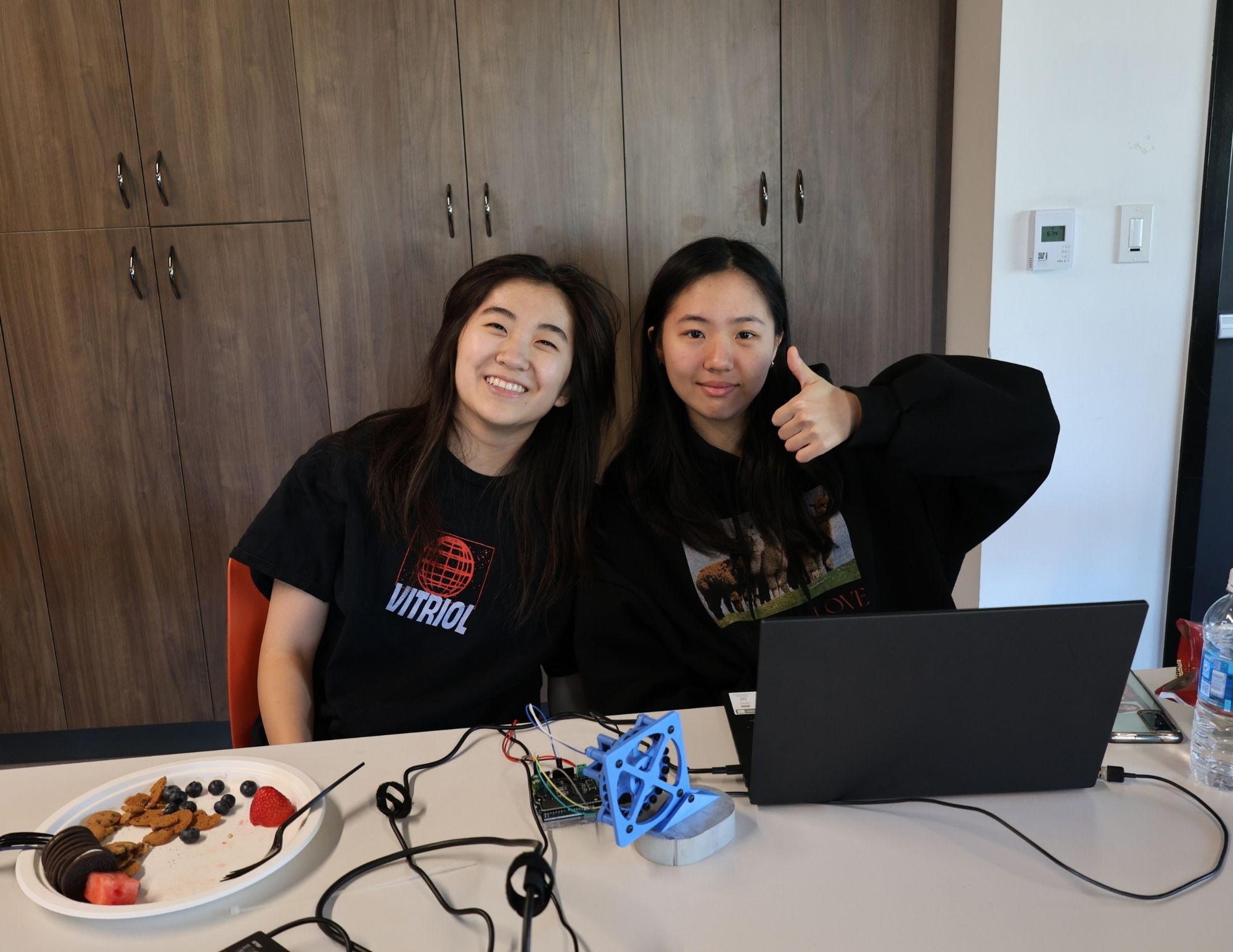Mar 8
We surprisingly made more progress during the demo
- Got the motor to spin in the correct direction and "attempt" a self balance using IMU readings (no video, unfortunately)
- Was very jittery and heated the motor
- Eventually the motor stopped running (we may have fried it)

#include <SimpleFOC.h>
#include <Adafruit_MPU6050.h>
#include <Adafruit_Sensor.h>
#include <Wire.h>
// Motor setup
BLDCMotor motor = BLDCMotor(7, 16.4, 90);
BLDCDriver3PWM driver = BLDCDriver3PWM(9, 5, 6, 8);
// IMU setup
Adafruit_MPU6050 mpu;
// PID variables
//float Kp = 15.0; // Proportional gain
//float Ki = 0.1; // Integral gain
//float Kd = 0.8; // Derivative gain
float Kp = 10.0; // Start lower
float Ki = 0.05; // Reduce integral action
float Kd = 2.5; // Increase damping
float previous_error = 0;
float integral = 0;
float setpoint = 0; // Desired angle (upright position)
float target_velocity = 0;
// Time tracking
unsigned long lastTime = 0;
const float dt = 0.01; // Time step in seconds
//const float dt = 0.005;
void setup() {
Serial.begin(115200);
Wire.begin();
// Initialize MPU6050
if (!mpu.begin()) {
Serial.println("Failed to find MPU6050!");
while (1) delay(10);
}
mpu.setAccelerometerRange(MPU6050_RANGE_4_G);
mpu.setGyroRange(MPU6050_RANGE_500_DEG);
mpu.setFilterBandwidth(MPU6050_BAND_21_HZ);
// Initialize motor driver
driver.voltage_power_supply = 12;
driver.voltage_limit = 12;
if (!driver.init()) {
Serial.println("Driver init failed!");
return;
}
motor.linkDriver(&driver);
motor.voltage_limit = 12;
motor.controller = MotionControlType::velocity_openloop;
if (!motor.init()) {
Serial.println("Motor init failed!");
return;
}
Serial.println("System ready!");
delay(1000);
}
void loop() {
sensors_event_t a, g, temp;
mpu.getEvent(&a, &g, &temp);
// Calculate angle using complementary filter
float accel_angle = atan2(a.acceleration.x, a.acceleration.z) * 180 / PI;
static float angle = 0;
float gyro_rate = g.gyro.y * 180 / PI;
angle = 0.98 * (angle + gyro_rate * dt) + 0.02 * accel_angle; // Complementary filter
// PID control
float error = setpoint - angle;
integral += error * dt;
float derivative = (error - previous_error) / dt;
target_velocity = Kp * error + Ki * integral + Kd * derivative;
previous_error = error;
// Apply velocity to motor
motor.move(target_velocity);
// Debug output
Serial.print("Angle: ");
Serial.print(angle);
Serial.print(" | Target Velocity: ");
Serial.println(target_velocity);
delay(10); // Run loop at ~100 Hz
}
 Dami Kim
Dami Kim
Discussions
Become a Hackaday.io Member
Create an account to leave a comment. Already have an account? Log In.